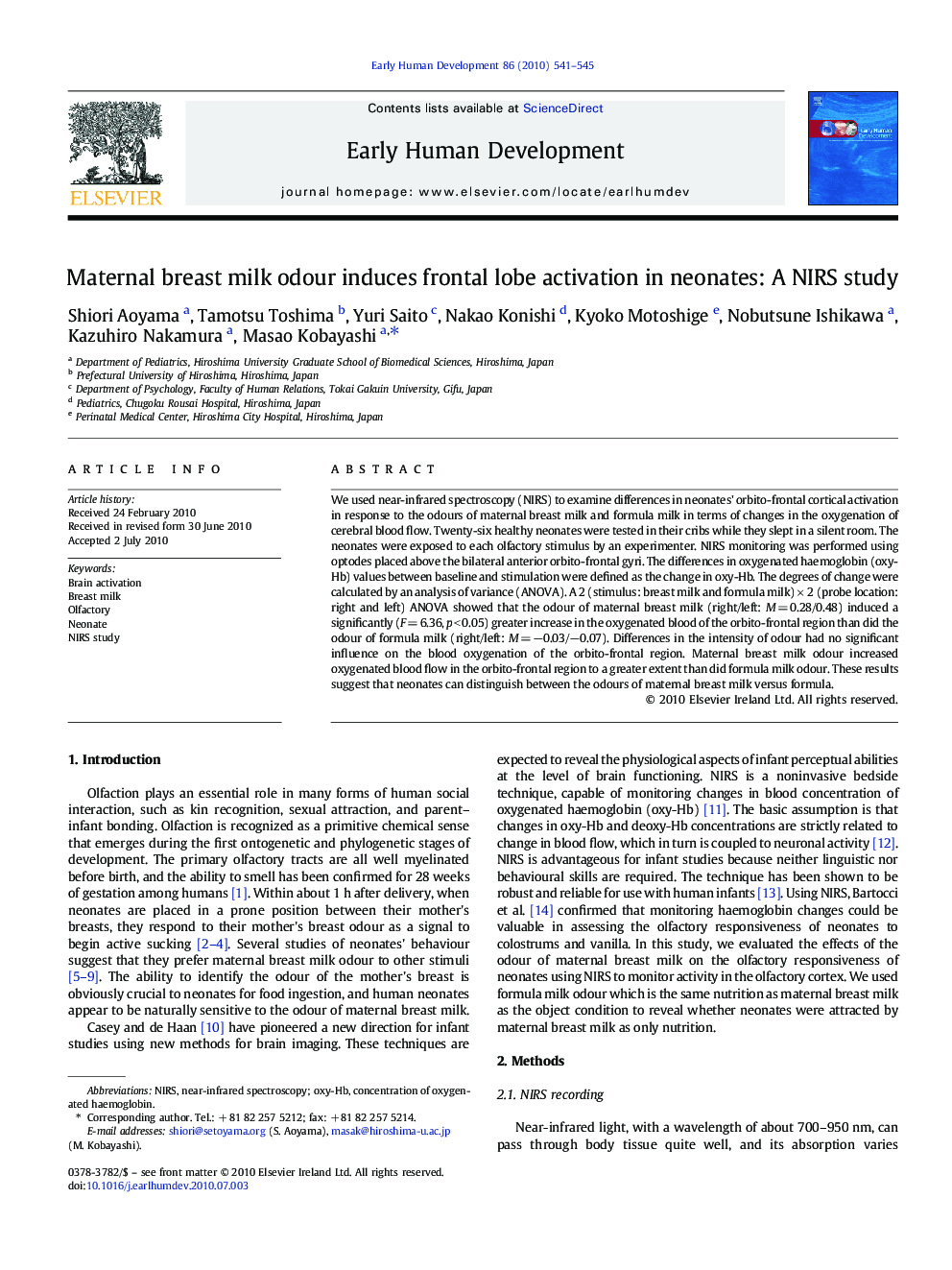| Article ID | Journal | Published Year | Pages | File Type |
|---|---|---|---|---|
| 6172219 | Early Human Development | 2010 | 5 Pages |
Abstract
We used near-infrared spectroscopy (NIRS) to examine differences in neonates' orbito-frontal cortical activation in response to the odours of maternal breast milk and formula milk in terms of changes in the oxygenation of cerebral blood flow. Twenty-six healthy neonates were tested in their cribs while they slept in a silent room. The neonates were exposed to each olfactory stimulus by an experimenter. NIRS monitoring was performed using optodes placed above the bilateral anterior orbito-frontal gyri. The differences in oxygenated haemoglobin (oxy-Hb) values between baseline and stimulation were defined as the change in oxy-Hb. The degrees of change were calculated by an analysis of variance (ANOVA). A 2 (stimulus: breast milk and formula milk) à 2 (probe location: right and left) ANOVA showed that the odour of maternal breast milk (right/left: M = 0.28/0.48) induced a significantly (F = 6.36, p < 0.05) greater increase in the oxygenated blood of the orbito-frontal region than did the odour of formula milk (right/left: M = â0.03/â0.07). Differences in the intensity of odour had no significant influence on the blood oxygenation of the orbito-frontal region. Maternal breast milk odour increased oxygenated blood flow in the orbito-frontal region to a greater extent than did formula milk odour. These results suggest that neonates can distinguish between the odours of maternal breast milk versus formula.
Related Topics
Health Sciences
Medicine and Dentistry
Obstetrics, Gynecology and Women's Health
Authors
Shiori Aoyama, Tamotsu Toshima, Yuri Saito, Nakao Konishi, Kyoko Motoshige, Nobutsune Ishikawa, Kazuhiro Nakamura, Masao Kobayashi,
